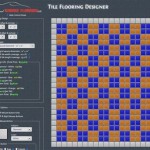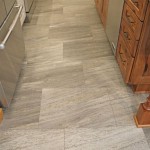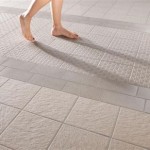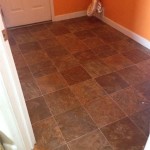Lighting Up Your Floors With Tile Lights: An Essential Guide to Meaningful Illumination
Tile lights have emerged as a game-changer in the world of interior design, offering both functional and aesthetic benefits. They allow you to create stunning effects that transform your floors into a captivating canvas of light and shadow.
Beyond their visual appeal, tile lights also hold a deeper significance, enhancing the ambiance and functionality of your spaces. Here's a comprehensive guide to the essential aspects of lighting up your floors with tile lights, revealing their profound impact on meaning:
1. Define Your Purpose: Functional vs. Decorative
Determine the primary purpose of your tile lights. Do you seek functional illumination to enhance visibility or are you aiming for a decorative statement that adds aesthetic intrigue? Functional lights provide targeted lighting, while decorative lights create ambiance and visual interest.
2. Choose the Right Placement: Strategy and Meaning
The placement of tile lights plays a crucial role in their meaning. Consider the flow of foot traffic, the shape of your room, and the overall design concept. Strategic placement can highlight architectural features, create focal points, and guide movement.
3. Consider the Tile Size and Pattern: A Mosaic of Meaning
The size and pattern of your tiles significantly impact the lighting effect. Smaller tiles create a more diffused and ambient glow, while larger tiles provide more focused illumination. Experiment with different patterns to achieve unique effects, such as a checkerboard or herringbone pattern for a sense of depth and texture.
4. Experiment with Color and Intensity: Expressing Moods
The color and intensity of your tile lights can evoke different moods and convey specific meanings. Warm, amber-hued lights create a cozy and inviting atmosphere, while cool, blue-toned lights evoke a sense of coolness and tranquility. Adjust the intensity to achieve the desired ambiance, from bright and energizing to dim and soothing.
5. Incorporate Symbolism and Cultural Connections: Lights of Significance
Tile lights can be infused with symbolism and cultural connections. For example, in some cultures, circular lights represent the cycle of life, while triangular lights symbolize stability and balance. Explore the rich tapestry of cultural meanings and incorporate them into your lighting design for a deeper sense of meaning and connection.
6. Create Focal Points and Define Spaces: Illuminating Meaning
Use tile lights to create focal points and define specific spaces within a room. By illuminating a particular area, such as a reading nook or a dining table, you can draw attention to it and create a sense of hierarchy. This technique can enhance both the functionality and the meaning of your spaces.
7. Illuminate Textures and Surfaces: Revealing Hidden Meanings
Tile lights have the unique ability to reveal the textures and surfaces of your floors. They can accentuate the natural beauty of stone and wood, or highlight the intricate patterns of ceramic tiles. By illuminating these textures, you create a richer and more tactile experience, adding depth and meaning to your spaces.
Conclusion
Lighting up your floors with tile lights is not merely about adding light but also about infusing meaning into your spaces. By understanding the essential aspects of tile lights, you can create stunning effects that enhance both the functionality and the ambiance of your home. Experiment with different placements, colors, and patterns to discover the transformative power of light and create a truly meaningful and inviting living environment.

Led Floor Tiles Full Guide Unilumin

In Floor Lighting 10 Sparkling Ways To Highlight And Style Decoist

Line Of Light Schlüter Systems

The Essential Guide To Bathroom Led Lighting Super Bright Leds
My Led Lights Keep Falling What Are Some Ways To Make Them Stick Quora

How Lighting Affects Hardwood Flooring S Color Garrison Collection

Avoid The Madness Laying Out Tile Life Of An Architect

Light Vs Dark Which Floors To Choose Flooring America

Ceramic Flooring That Can Be Installed 8 Times Faster Than Conventional Tiling Archdaily

Light Vs Dark Which Floors To Choose Flooring America
Related Posts








